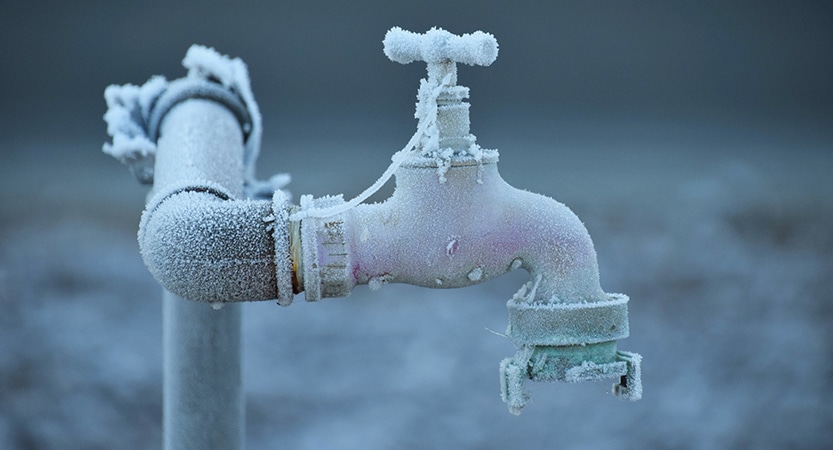Essential Strategies for Avoiding Frozen Plumbing in Cold Weather
Essential Strategies for Avoiding Frozen Plumbing in Cold Weather
Blog Article
We've discovered this post about How to Prevent Your Pipes From Freezing below on the internet and accepted it made good sense to write about it with you here.

Cold weather can ruin your pipes, particularly by freezing pipelines. Here's how to stop it from happening and what to do if it does.
Introduction
As temperature levels decrease, the risk of icy pipes rises, possibly bring about expensive fixings and water damage. Recognizing just how to prevent frozen pipes is critical for property owners in chilly environments.
Avoidance Tips
Shielding vulnerable pipelines
Cover pipelines in insulation sleeves or make use of warm tape to shield them from freezing temperatures. Concentrate on pipelines in unheated or exterior areas of the home.
Heating methods
Maintain indoor rooms appropriately heated up, particularly areas with plumbing. Open cupboard doors to allow cozy air to flow around pipes under sinks.
Exactly how to recognize frozen pipes
Search for reduced water circulation from faucets, uncommon smells or noises from pipelines, and visible frost on revealed pipes.
Long-Term Solutions
Architectural adjustments
Take into consideration rerouting pipelines far from outside walls or unheated locations. Include added insulation to attic rooms, basements, and crawl spaces.
Updating insulation
Invest in top notch insulation for pipes, attics, and walls. Proper insulation assists keep constant temperatures and decreases the danger of icy pipes.
Securing Outside Pipes
Yard tubes and outside taps
Detach and drain pipes yard pipes before winter. Install frost-proof faucets or cover exterior faucets with protected caps.
Comprehending Icy Pipes
What causes pipes to freeze?
Pipes freeze when subjected to temperature levels listed below 32 ° F (0 ° C) for expanded durations. As water inside the pipelines ices up, it expands, putting pressure on the pipe walls and possibly creating them to break.
Threats and problems
Icy pipelines can bring about water supply disruptions, property damage, and pricey repair services. Burst pipelines can flood homes and create considerable architectural damage.
Signs of Frozen Pipes
Determining icy pipelines early can stop them from breaking.
What to Do If Your Pipes Freeze
Immediate actions to take
If you presume icy pipelines, maintain faucets available to ease pressure as the ice melts. Make use of a hairdryer or towels soaked in hot water to thaw pipelines slowly.
Final thought
Preventing icy pipes calls for proactive actions and quick reactions. By recognizing the causes, indications, and preventive measures, house owners can protect their pipes during winter.
5 Ways to Prevent Frozen Pipes
Drain Outdoor Faucets and Disconnect Hoses
First, close the shut-off valve that controls the flow of water in the pipe to your outdoor faucet. Then, head outside to disconnect and drain your hose and open the outdoor faucet to allow the water to completely drain out of the line. Turn off the faucet when done. Finally, head back to the shut-off valve and drain the remaining water inside the pipe into a bucket or container. Additionally, if you have a home irrigation system, you should consider hiring an expert to clear the system of water each year.
Insulate Pipes
One of the best and most cost-effective methods for preventing frozen water pipes is to wrap your pipes with insulation. This is especially important for areas in your home that aren’t exposed to heat, such as an attic. We suggest using foam sleeves, which can typically be found at your local hardware store.
Keep Heat Running at 65
Your pipes are located inside your walls, and the temperature there is much colder than the rest of the house. To prevent your pipes from freezing, The Insurance Information Institute suggests that you keep your home heated to at least 65 degrees, even when traveling. You may want to invest in smart devices that can keep an eye on the temperature in your home while you’re away.
Leave Water Dripping
Moving water — even a small trickle — can prevent ice from forming inside your pipes. When freezing temps are imminent, start a drip of water from all faucets that serve exposed pipes. Leaving a few faucets running will also help relieve pressure inside the pipes and help prevent a rupture if the water inside freezes.
Open Cupboard Doors
Warm your kitchen and bathroom pipes by opening cupboards and vanities. You should also leave your interior doors ajar to help warm air circulate evenly throughout your home.

I found that piece on Helpful Tips to Prevent Frozen Pipes this Winter when surfing the internet. You should set aside a second to distribute this content if you appreciated it. Thanks a lot for being here. Return soon.
Call Today Report this page